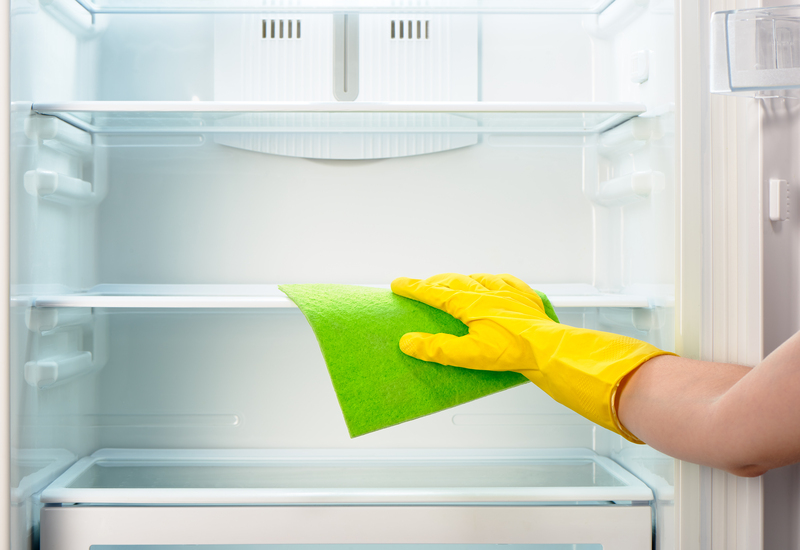Erase Grease From Enamel: Easy Tray Cleaning Techniques
Posted on 26/08/2025
Erase Grease From Enamel: Easy Tray Cleaning Techniques
Enamel trays are staples in kitchens, bakeries, and even art studios due to their durability and classic appearance. Yet, their appeal can quickly fade when sticky, stubborn grease and baked-on grime accumulate. Whether you use your enamel tray for baking, roasting, or creative projects, restoring that smooth, clean finish is essential for hygiene, performance, and aesthetics.
In this comprehensive, SEO-optimized article, we'll guide you through multilayered approaches to erase grease from enamel tray surfaces. From common household techniques to specialist solutions, discover proven, reader-friendly cleaning methods--plus tips to stop grease build-up before it starts. If you're looking for simple or advanced ways to clean enamel pans and trays, read on!

Why Is Grease Removal from Enamel Trays Important?
Before diving into easy tray cleaning techniques, let's understand why tackling grease on enamel matters:
- Hygiene: Grease provides a breeding ground for bacteria and mold, posing potential health risks.
- Performance: Baked-on grease interferes with even heat distribution, leading to uneven cooking or baking.
- Aesthetics: Stained enamel looks unappealing and unprofessional.
- Longevity: Prolonged grease contact can damage the enamel coating, causing chips or scratches.
In short, removing grease from enamel trays isn't just about looks--it's about safety and preserving your investment.
Common Causes of Grease Buildup on Enamel Trays
Understanding why grease sticks to your trays in the first place can help you prevent and remove it more effectively. Common causes include:
- Cooking fatty foods like bacon, sausages, and baked goods.
- Spillage and splatter during baking or roasting.
- Infrequent cleaning after use, allowing grease to harden and carbonize.
- Using too little or the wrong cleaning products that fail to break down oily residues.
Whatever the cause, erasing grease from enamel tray surfaces requires both the right methods and a little persistence. Let's jump into the easiest and most effective cleaning techniques!
Essential Cleaning Tools and Supplies
To clean and degrease enamel trays efficiently, keep the following tools handy:
- Non-abrasive sponges or soft-bristled brushes: Prevents scratching the enamel surface.
- Microfiber cloths: Ideal for drying and maintaining a streak-free finish.
- Baking soda: A gentle, natural abrasive that lifts grime and neutralizes odors.
- White vinegar: Dissolves grease and cuts through residue effectively.
- Dishwashing liquid: Specifically, a degreasing formula for maximum grease-cutting power.
- Plastic or wooden scrapers: Useful for removing stubborn, baked-on grease without damaging enamel.
- Hot water: Essential for loosening tough grease stains.
- Rubber gloves: Protects your hands during deep cleaning sessions.
Now that you're equipped, discover step-by-step techniques for erasing grease from even the most stubborn enamel tray messes.
Simple, Natural Methods to Erase Grease from Enamel Trays
1. The Baking Soda and Vinegar Method
Natural, safe, and effective--baking soda and vinegar are iconic for a reason. Here's how to use them to remove grease from enamel trays:
- Sprinkle a liberal layer of baking soda over greasy or stained areas.
- Spray or pour a small amount of white vinegar onto the baking soda. It should fizz actively.
- Let the solution sit for 20-30 minutes, allowing it to break down the grease and stains.
- Use a soft sponge or microfiber cloth to gently scrub in circular motions.
- Rinse with hot water and dry thoroughly with a clean towel.
Repeat the process for particularly stubborn spots. This method is gentle and won't harm the enamel.
2. Lemon and Salt Scrub
Citrus cuts through grease and salt acts as a mild abrasive.
- Cut a lemon in half and sprinkle kosher salt liberally over the tray.
- Use the lemon half as a scrubber, focusing on greasy stains.
- The citric acid and salt help dissolve residue and brighten the tray's surface.
- Rinse and dry.
This method deodorizes as well as cleans--great for lingering food smells!
3. Hot Water and Degreasing Dish Soap Soak
For regular maintenance or less severe grease, a simple soak can be highly effective:
- Fill your sink with very hot water and add a generous squirt of degreasing dish soap.
- Submerge the enamel tray and let it soak for 30-60 minutes.
- Use a non-abrasive sponge to wipe away loosened grease and grime.
- Rinse with hot water and dry completely.
Tip: For particularly stubborn patches, apply a paste of dish soap and baking soda, let it sit, then scrub lightly.
Advanced Grease Removal: Tackling Stubborn, Baked-On Stains
1. Baking Soda Paste for Caked-On Grease
Sometimes, the simple solutions need a little boost. If your enamel tray has layers of baked-on grease:
- Mix Baking Soda with a bit of water to form a thick paste.
- Spread the paste liberally over stained or greasy areas.
- Let sit for at least 1 hour (overnight for extra-tough grease).
- Use a soft-bristled brush to gently scrub the area.
- Wipe away the residue, rinse, and dry.
2. The Power of Hydrogen Peroxide
For the most persistent stains, hydrogen peroxide offers a safe, impressive solution (always do a patch test first):
- Sprinkle baking soda onto the greasy area.
- Pour a little hydrogen peroxide over the baking soda to form a bubbly paste.
- Let it sit for 1-2 hours.
- Gently scrub with a non-abrasive sponge.
- Rinse thoroughly.
3. Commercial Enamel Degreaser Products
Stubborn, years-old grease might require a specialized degreaser designed for enamel cookware. Choose a product certified as safe for enamel surfaces and follow the manufacturer's instructions carefully. These powerful cleaners penetrate and lift even carbonized oils.
Preventing Grease Buildup on Enamel Trays
While it's essential to know how to clean greasy enamel trays, prevention saves you time and elbow grease!
- Clean after every use: Don't let oils and fats harden after cooking or baking.
- Use parchment paper or silicone liners: These create a barrier between food and tray.
- Wipe with a damp cloth post-cooking: Especially after roasting or frying foods high in fat.
- Store trays in a dry, clean place: Reduces risk of both grease and moisture-related damage.
- Avoid metal utensils: Prevents scratching, which allows grease to lodge in enamel cracks.
What NOT to Use On Enamel Trays
Protect your enamel trays from avoidable damage by avoiding the following:
- Steel wool or abrasive scouring pads: These can scratch--never use them on enamel surfaces.
- Harsh oven cleaners: Many contain chemicals unsafe for cookware.
- Bleach: Can discolor or weaken enamel.
- Sharp metal tools: These chip enamel and create sites for future rust and grease buildup.
Stick with the safe, tested methods outlined above for lasting, reliable results.
Expert Tips for Sparkling Clean Enamel Trays
- Dry thoroughly after cleaning to prevent water spots and increase shine.
- Buff with a microfiber cloth to restore the tray's natural gloss.
- Store enamelware separated from heavy pots and pans to avoid chips and scratches.
- If trays are particularly stained, repeat cleaning methods or combine approaches for best results.
Remember: Consistent, gentle cleaning is far more effective (and easier!) than infrequent scrubbing with harsh, damaging tools.

Frequently Asked Questions About Erasing Grease From Enamel Trays
Can I put enamel trays in the dishwasher?
Most modern enamel cookware is dishwasher-safe, but frequent dishwashing can dull the finish over time and may not fully remove stubborn, baked-on grease. For best results, use hand-cleaning methods regularly and reserve the dishwasher for maintenance cleanings.
What if my enamel tray has chips or rust?
If enamel is chipped, avoid cleaning with any acidic or abrasive products, and do not use trays with exposed metal for food preparation. Small rust spots require replacement or professional recoating.
Is it safe to use vinegar, baking soda, or hydrogen peroxide on colored enamel?
Yes, in most cases. Always test a small, inconspicuous corner during the first use to ensure no discoloration. Avoid ammonia and bleach, which can alter enamel color.
How often should I deep clean my enamel trays?
For frequent cooks or bakers, a deep clean once per week maintains tray appearance and hygiene. Otherwise, monthly maintenance is generally sufficient if you wipe and rinse after every use.
Conclusion: Enjoy Spotless, Longevity-Boosted Enamel Trays
Learning how to erase grease from enamel trays can transform your cooking and cleaning routine. With regular care and the right cleaning techniques, your trays will remain gleaming, nonstick, and safe for years of delicious use. Whether you adopt natural methods like baking soda and vinegar, leverage modern degreasers, or prevent grease buildup from the start, cleaning enamel trays doesn't have to be a chore.
Empower yourself with these easy tray cleaning techniques, and enjoy a more beautiful, functional, and lasting kitchen collection!
- Act quickly: Don't delay cleaning after use.
- Be gentle: Always use non-abrasive tools and mild cleaners.
- Stay consistent: Regular maintenance is the secret to pristine, grease-free enamel trays.
Now that you know how to erase grease from enamel trays swiftly and safely, it's time to reclaim that pristine shine. Happy cleaning!




